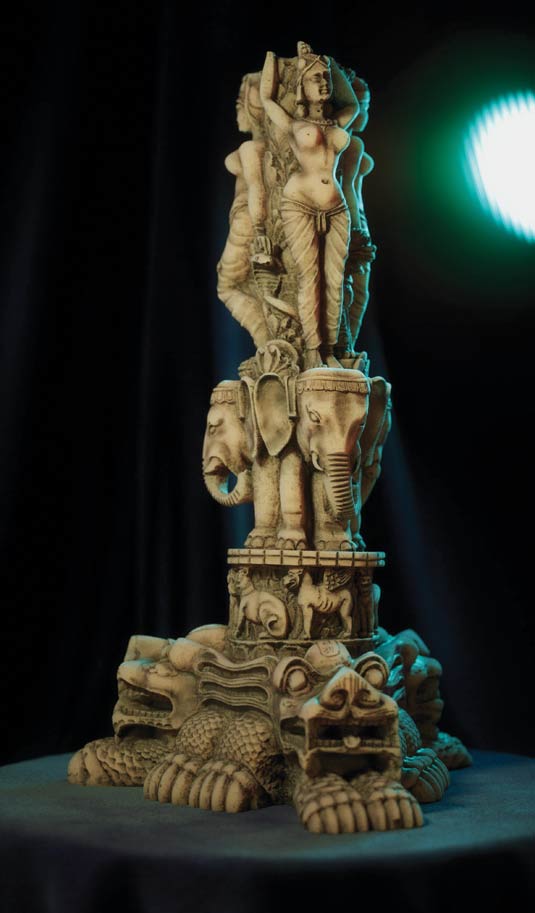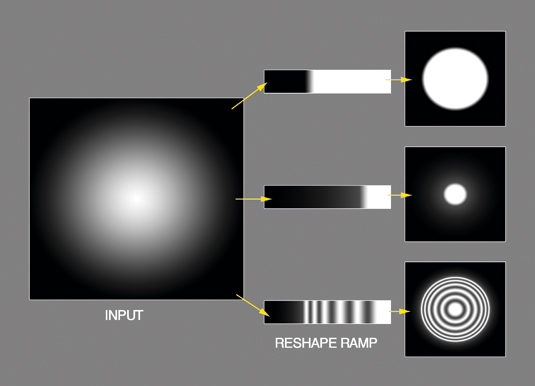Free Printable How Great Thou Art Key of a
five tips for creating dramatic key art
When I'k asked to create images for production visualisation, one of the challenges is the lighting setup. You have to make sure the subject's contours and silhouette are nicely underlined to present it in the best low-cal and accentuate the aspects the client wants to put forward.
Unbiased rendering engines offering the possibility to work in ways that weren't possible before. I recently had to create a series of renders for pocket-sized items. I decided to create a elementary object-centric low-cal stage that I could reuse for every single render, with the ability to quickly manipulate and alter the lighting setup that would then be shared across all scenes.

This setup comprises a set of xiv planes organised symmetrically effectually the object to exist rendered. Each of these planes is set up every bit a calorie-free emitter driven by its own shader. The shader attributes are shared across the board and each shader instance is named after the aeroplane it is assigned to (for example, pinnacle, bottom, and left). That fashion, I tin hands control each plane independently.
Thinking of the whole fix of planes as a simple sphere centred on my subject, I can easily rotate the entire rig to adjust it to the view bending, and scale it upward and down in club to fit the size of the subject. Each light is driven by a simple circular or square gradient texture that I reshape through a scalar ramp.
Nosotros tin utilize procedural or raster textures to add details to our lights, like barn doors, blinds or even import high dynamic range (HDR) images of windows or any other bitmap source to add more richness to our scene, and provide a good fill light if necessary. Finally, a couple of simple lengthened reflector planes strategically positioned around the object assistance seal the deal.
Scroll downwards for 5 tips for creating dramatic fundamental art...
01. Ready upwards your object

This technique is used for object-centric shots. Build a simple generic stage that will not distract your viewers from the focus – in this case, a simple cylinder covered with an nCloth object.
One time this is in identify, organise the planes around your chief subject in a geometric pattern. Proceed the setup clean and proper name your objects appropriately then that you can easily tell which one you will affect, depending on their respective shaders.
02. Set upwards the UVs

Remember that each of the planes arranged around your focal object must have UVs in order to be able to support texture input. Set up the UVs to a range of 0 to 1. I ever use a xvi-bit gradient texture to bulldoze the intensity of my spotlights and proceed the manipulations every bit precise every bit possible. These gradients are then reshaped using ramps in lodge to vary their intensity and radius and overall aspect.
03. Procedural textures

To add depth to the lights, we tin can use further layering. First I multiply the output with a colour. Then, thinking of it every bit simple mattes and shades for your lights using procedural textures, we can create objects like blinds or befouled doors. All we need to practise and so is to adjust the width and height ratio of the texture. Alternatively, we can use simple bitmaps for more than exotic effects, like leaf or more than geometric shapes.
04. Placing reflectors

Once we're satisfied with the overall orientation, colour and intensity of our lights, we still take the option to polish the concluding results by placing reflectors effectually the scene in society to lengthened the light on the darkest contours of our subject area.
Mostly unproblematic bright planes practice the fob but sometimes, past calculation a slight colour or specular aspect to the shader assigned to the reflector, we tin heighten the richness of the final result.
05. Pro tip: light scattering
You lot tin also use geometry other than unproblematic planes as emitters to besprinkle your light in different manners. You can create simple gels or even highly diffractive shaders to obtain exotic effects!
Words: Hugues Giboire
Hugues Giboire is a 3D artist with more than than xx years' experience in the CG industry. He'due south a Bafta nominee for creative achievement in video games. This article originally appeared in 3D World issue 184.
Related articles
Source: https://www.creativebloq.com/3d/creating-dramatic-key-art-111413539
Post a Comment for "Free Printable How Great Thou Art Key of a"